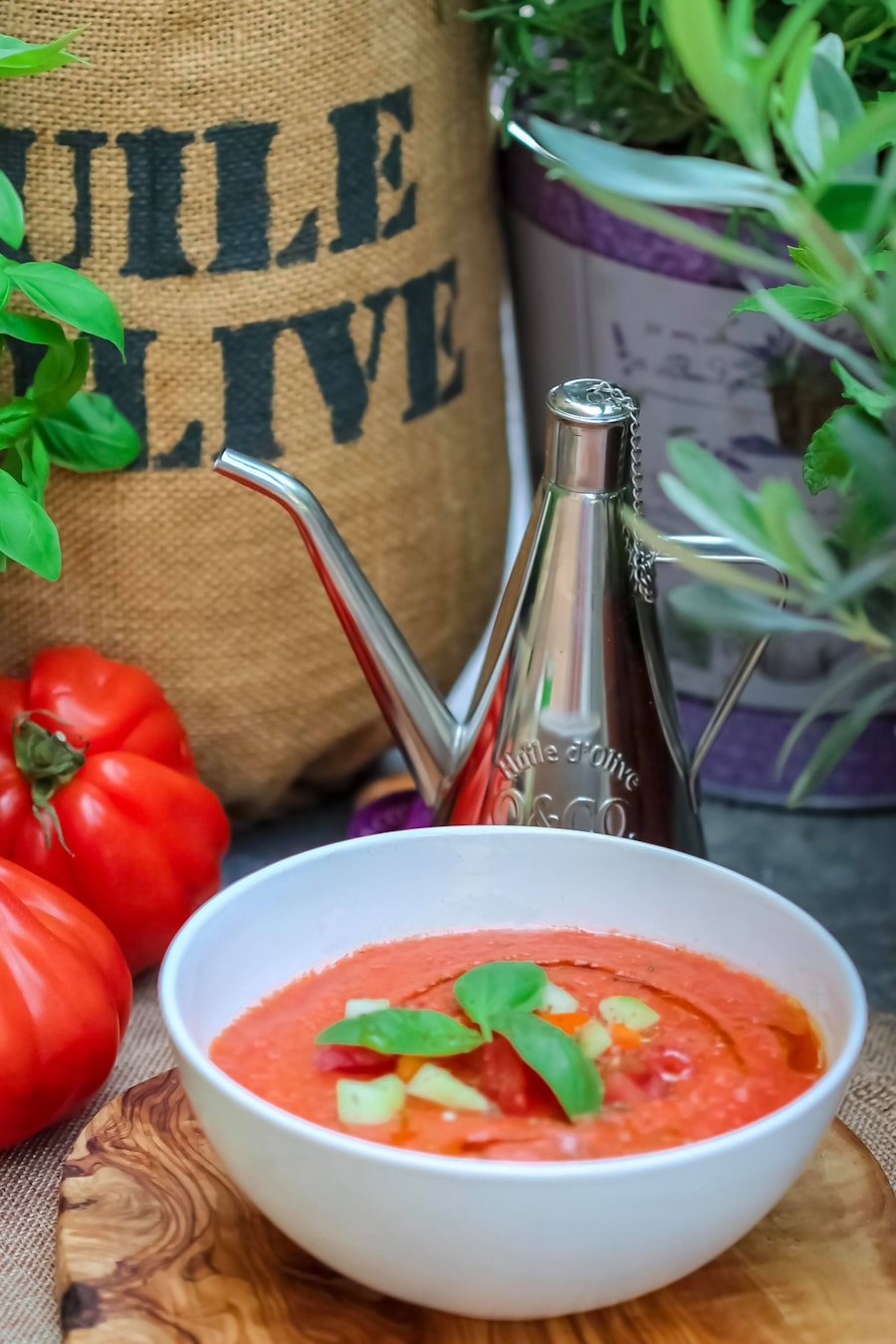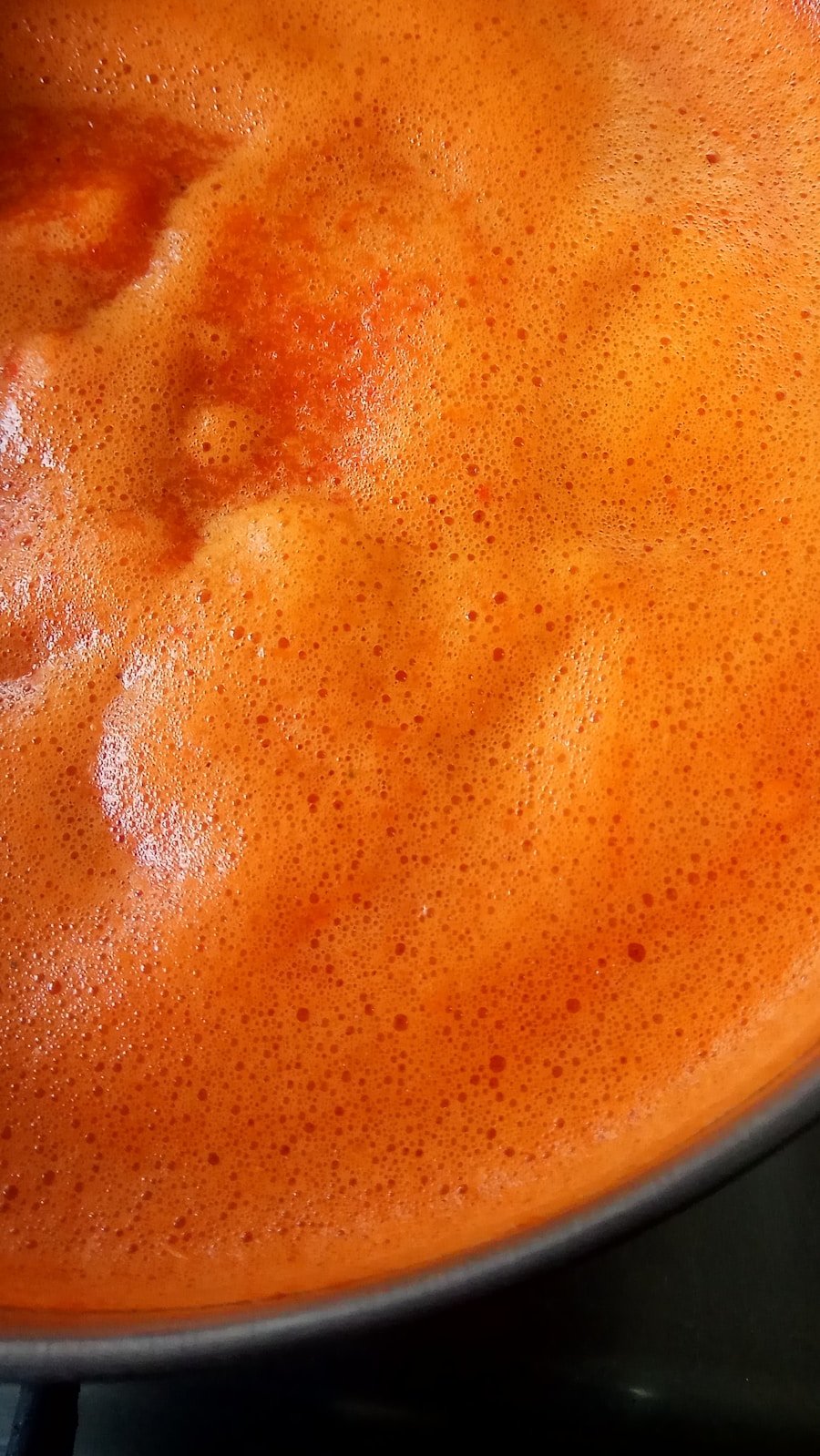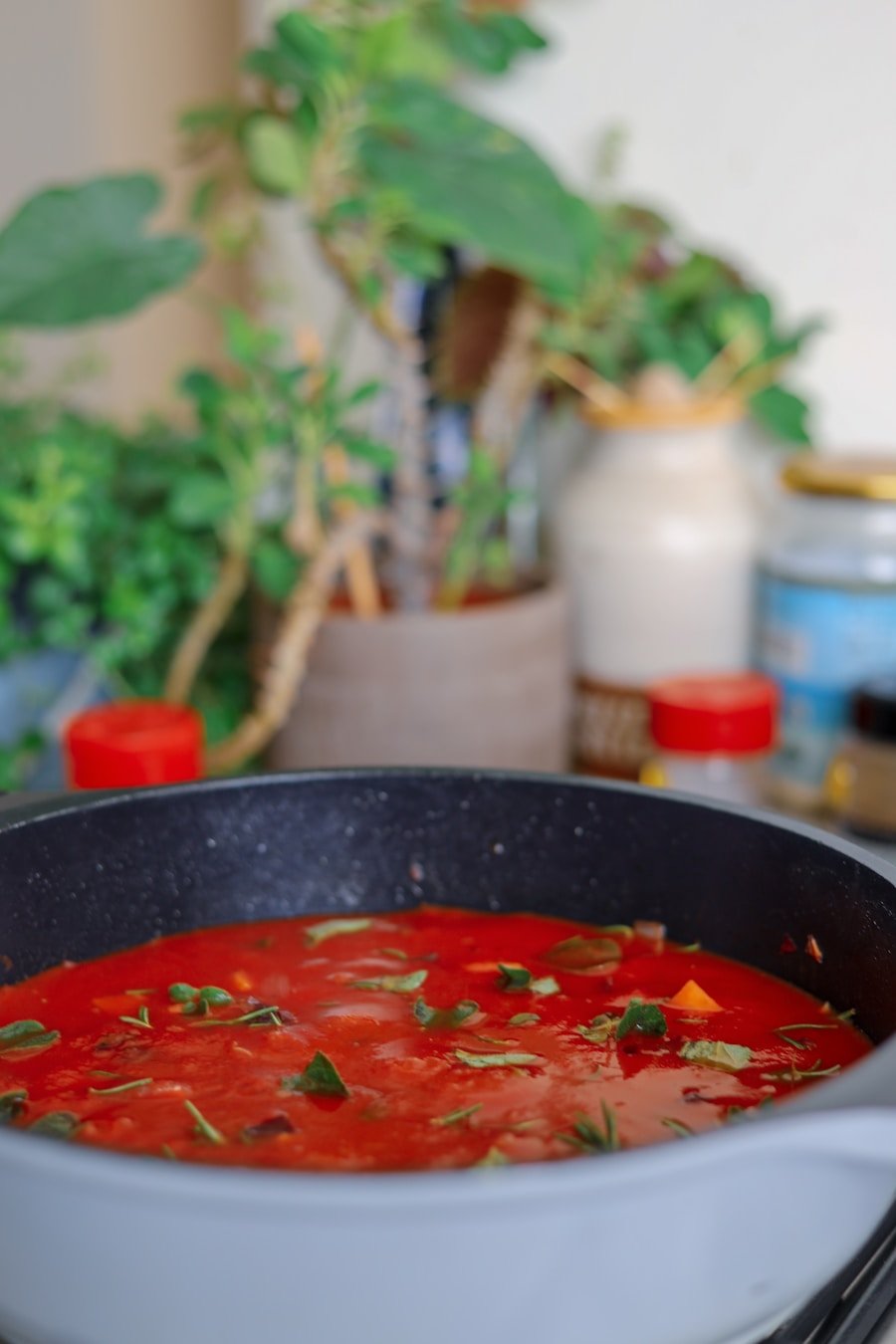Homemade tomato sauce is a culinary staple that transcends borders and cultures, offering a rich tapestry of flavors and aromas that can elevate any dish. The process of making tomato sauce from scratch is not only rewarding but also allows for a level of customization that store-bought varieties simply cannot match. Whether you are preparing a classic marinara for pasta, a robust sauce for pizza, or a base for stews and soups, the essence of homemade tomato sauce lies in its freshness and the quality of its ingredients.
The beauty of crafting your own tomato sauce is that it connects you to the ingredients and the cooking process itself. It invites you to explore the nuances of flavor, texture, and aroma, transforming simple tomatoes into a vibrant sauce that can be tailored to your personal taste. This article will guide you through the entire process of making homemade tomato sauce, from selecting the best tomatoes to storing your finished product, ensuring that you can create a sauce that is not only delicious but also uniquely yours.
Key Takeaways
- Homemade tomato sauce is a versatile and delicious addition to many recipes, and making it from scratch allows for customization and control over ingredients.
- When selecting tomatoes for sauce, look for ripe, flavorful varieties such as Roma, San Marzano, or heirloom tomatoes for the best results.
- Preparing the tomatoes for sauce involves removing the skins and seeds, which can be done by blanching and peeling the tomatoes before chopping or crushing them.
- Cooking the tomato sauce involves simmering the prepared tomatoes with aromatics such as onions, garlic, and herbs to develop rich flavors and a thick, smooth consistency.
- Seasoning and flavoring the tomato sauce can be done with salt, pepper, sugar, and additional herbs and spices to taste, allowing for customization to suit different recipes and preferences.
Selecting the Best Tomatoes for Sauce
The foundation of any great tomato sauce is, unsurprisingly, the tomatoes themselves. When it comes to selecting tomatoes for sauce, certain varieties stand out due to their flavor profile and texture. Roma tomatoes, also known as plum tomatoes, are often favored for their low moisture content and meaty flesh, which makes them ideal for cooking down into a thick, rich sauce.
Their concentrated flavor and fewer seeds mean that they yield a smoother consistency, making them a popular choice among chefs and home cooks alike. However, other varieties can also contribute to a delicious sauce. San Marzano tomatoes, hailing from Italy, are renowned for their sweet flavor and balanced acidity.
They are often considered the gold standard for tomato sauces and are protected by a designation of origin, ensuring their quality. Heirloom tomatoes, with their diverse shapes and flavors, can add complexity to your sauce. Mixing different varieties can yield a more nuanced flavor profile, allowing you to experiment with sweetness, acidity, and depth.
When selecting tomatoes, look for those that are firm, ripe, and free from blemishes or soft spots; this will ensure that your sauce has the best possible flavor.
Preparing the Tomatoes for Sauce

Once you have selected your tomatoes, the next step is preparation. Properly preparing your tomatoes is crucial for achieving the desired texture and flavor in your sauce. Start by washing the tomatoes thoroughly under running water to remove any dirt or pesticides.
After washing, you may choose to blanch the tomatoes to make peeling easier. To do this, bring a pot of water to a boil and prepare an ice bath in a separate bowl. Score the bottom of each tomato with an “X” using a sharp knife, then plunge them into the boiling water for about 30 seconds.
This process loosens the skin, making it easy to peel off once they are transferred to the ice bath. After peeling, it’s time to core and seed the tomatoes. Cut out the stem end with a paring knife and slice the tomatoes in half.
While some cooks prefer to leave the seeds in for added texture and flavor, removing them can result in a smoother sauce. If you opt to seed your tomatoes, gently squeeze each half over a bowl to catch the seeds and excess juice. Once prepared, chop the tomatoes into smaller pieces if desired; this will help them cook down more quickly during the sauce-making process.
Cooking the Tomato Sauce
| Metrics | Value |
|---|---|
| Tomatoes Used | 10 kg |
| Cooking Time | 2 hours |
| Ingredients | Tomatoes, Olive Oil, Garlic, Salt, Pepper, Basil |
| Calories per Serving | 50 kcal |
Cooking your tomato sauce is where the magic truly happens. Begin by heating a generous amount of olive oil in a large pot over medium heat. Once the oil is shimmering, add aromatics such as finely chopped onions and garlic.
Sauté these ingredients until they become translucent and fragrant; this step builds a flavorful base for your sauce. The combination of onions and garlic is classic in many cuisines and adds depth to the overall flavor profile. Once your aromatics are ready, it’s time to add the prepared tomatoes.
Stir them into the pot and allow them to cook down slowly. As they heat up, they will release their juices, creating a natural liquid that will form the base of your sauce. It’s important to let the tomatoes simmer gently rather than boil vigorously; this slow cooking process allows the flavors to meld together beautifully while preventing the sauce from becoming too watery.
Depending on your desired consistency, you may want to let it simmer for anywhere from 30 minutes to several hours. Stir occasionally to prevent sticking and ensure even cooking.
Seasoning and Flavoring the Tomato Sauce
Seasoning is an essential step in crafting a delicious homemade tomato sauce. While tomatoes provide a wonderful base flavor, they often require enhancement through various herbs and spices. A classic approach involves adding salt and freshly cracked black pepper to taste; these basic seasonings help bring out the natural sweetness of the tomatoes while balancing their acidity.
Herbs play a pivotal role in elevating your sauce’s flavor profile. Fresh basil is a traditional choice that pairs beautifully with tomatoes; its aromatic qualities complement the sauce perfectly. You can add whole leaves during cooking or chop them finely for more intense flavor release.
Oregano is another herb commonly used in tomato sauces; its earthy notes add depth and complexity. For those who enjoy a bit of heat, red pepper flakes can be introduced for a spicy kick. Additionally, consider incorporating other flavor enhancers such as sugar or balsamic vinegar if your sauce tastes overly acidic; these ingredients can help balance out flavors without overpowering the dish.
Storing and Preserving Homemade Tomato Sauce

Once you have crafted your perfect tomato sauce, proper storage is essential to maintain its freshness and flavor over time. If you plan to use your sauce within a few days, simply transfer it to an airtight container and refrigerate it; homemade tomato sauce typically lasts about five days in the fridge. However, if you want to preserve it for longer periods, freezing is an excellent option.
To freeze your tomato sauce effectively, allow it to cool completely before transferring it into freezer-safe containers or resealable plastic bags. Portioning out the sauce into smaller containers can be beneficial; this way, you can thaw only what you need without having to defrost an entire batch. Be sure to leave some space at the top of each container or bag since liquids expand when frozen.
Homemade tomato sauce can last up to six months in the freezer without significant loss of quality.
Using Homemade Tomato Sauce in Recipes
The versatility of homemade tomato sauce makes it an invaluable addition to countless recipes across various cuisines. One of the most popular uses is as a base for pasta dishes; whether you’re preparing spaghetti with marinara or lasagna layered with rich meat sauce, homemade tomato sauce enhances every bite with its fresh flavor. You can also use it as a pizza sauce; simply spread it over your dough before adding toppings for an authentic taste that rivals pizzerias.
Beyond pasta and pizza, homemade tomato sauce can serve as an excellent foundation for soups and stews. Adding it to vegetable or bean soups can enrich their flavors while providing a hearty texture. Additionally, consider using it as a braising liquid for meats; slow-cooking chicken or beef in tomato sauce infuses them with moisture and flavor while creating a delicious gravy that can be served alongside rice or bread.
Tips and Tricks for Perfecting Homemade Tomato Sauce
Perfecting homemade tomato sauce often comes down to small details that can significantly impact flavor and texture. One key tip is to allow your sauce to simmer longer than you might initially think necessary; this slow cooking process helps develop deeper flavors as water evaporates and ingredients meld together harmoniously. Taste frequently during cooking; adjusting seasonings at various stages allows you to achieve balance according to your preferences.
Another trick involves experimenting with additional ingredients that can enhance your sauce’s complexity. For instance, adding grated Parmesan cheese or anchovies during cooking can impart umami richness without overwhelming the tomato flavor. If you enjoy experimenting with different cuisines, consider incorporating spices like cumin or coriander for an unexpected twist on traditional Italian flavors.
Lastly, don’t hesitate to customize your recipe based on seasonal ingredients or personal preferences. The beauty of homemade tomato sauce lies in its adaptability; whether you prefer it chunky or smooth, sweet or savory, there are endless possibilities waiting to be explored in your kitchen.
If you’re looking to upgrade your kitchen organization, check out this article on the 5 Top Desk Drawer Organizers for Snacks. Having a well-organized kitchen can make cooking homemade tomato sauce even more enjoyable. And once you’ve made your delicious sauce, you’ll want to serve it in style with the 5 Best Outdoor Dinnerware for Entertaining. And to keep your kitchen fresh and clean after cooking, consider using one of the 5 Best Garbage Disposal Cleaners recommended in another helpful article.
FAQs
What ingredients do I need to make homemade tomato sauce from scratch?
To make homemade tomato sauce from scratch, you will need fresh tomatoes, olive oil, onions, garlic, salt, pepper, and herbs such as basil and oregano.
How do I make homemade tomato sauce from scratch?
To make homemade tomato sauce from scratch, start by blanching the tomatoes to remove the skins, then sauté onions and garlic in olive oil. Add the tomatoes and cook them down until they break apart. Season with salt, pepper, and herbs, and simmer until the sauce thickens.
How long does homemade tomato sauce last?
Homemade tomato sauce can be stored in the refrigerator for up to 1 week, or frozen for up to 6 months.
Can I customize the flavor of homemade tomato sauce?
Yes, you can customize the flavor of homemade tomato sauce by adjusting the amount of herbs and seasonings, or adding other ingredients such as red pepper flakes, sugar, or balsamic vinegar to suit your taste preferences.
What can I use homemade tomato sauce for?
Homemade tomato sauce can be used as a base for pasta dishes, pizza, soups, stews, and as a dipping sauce for bread or appetizers.

